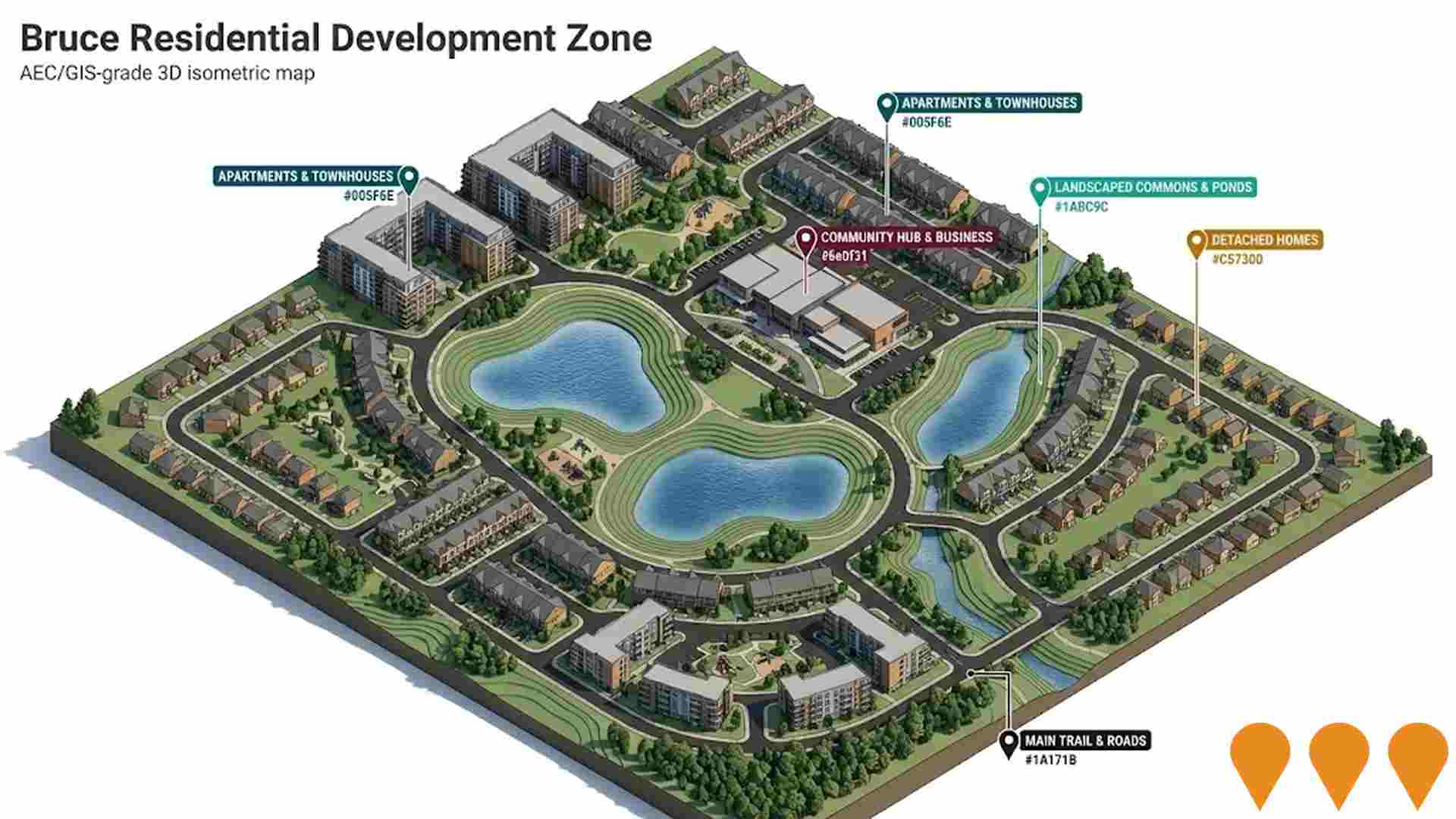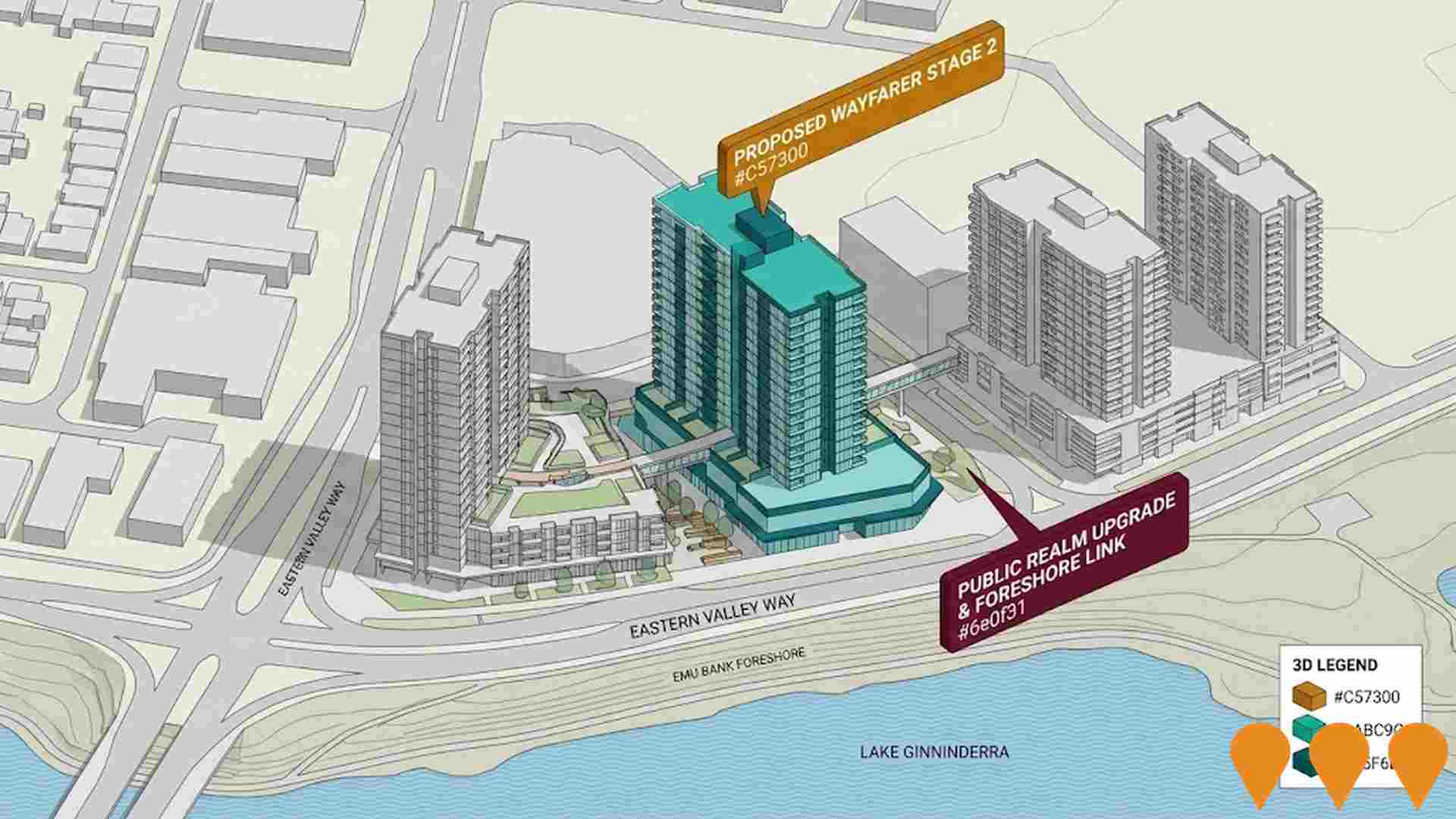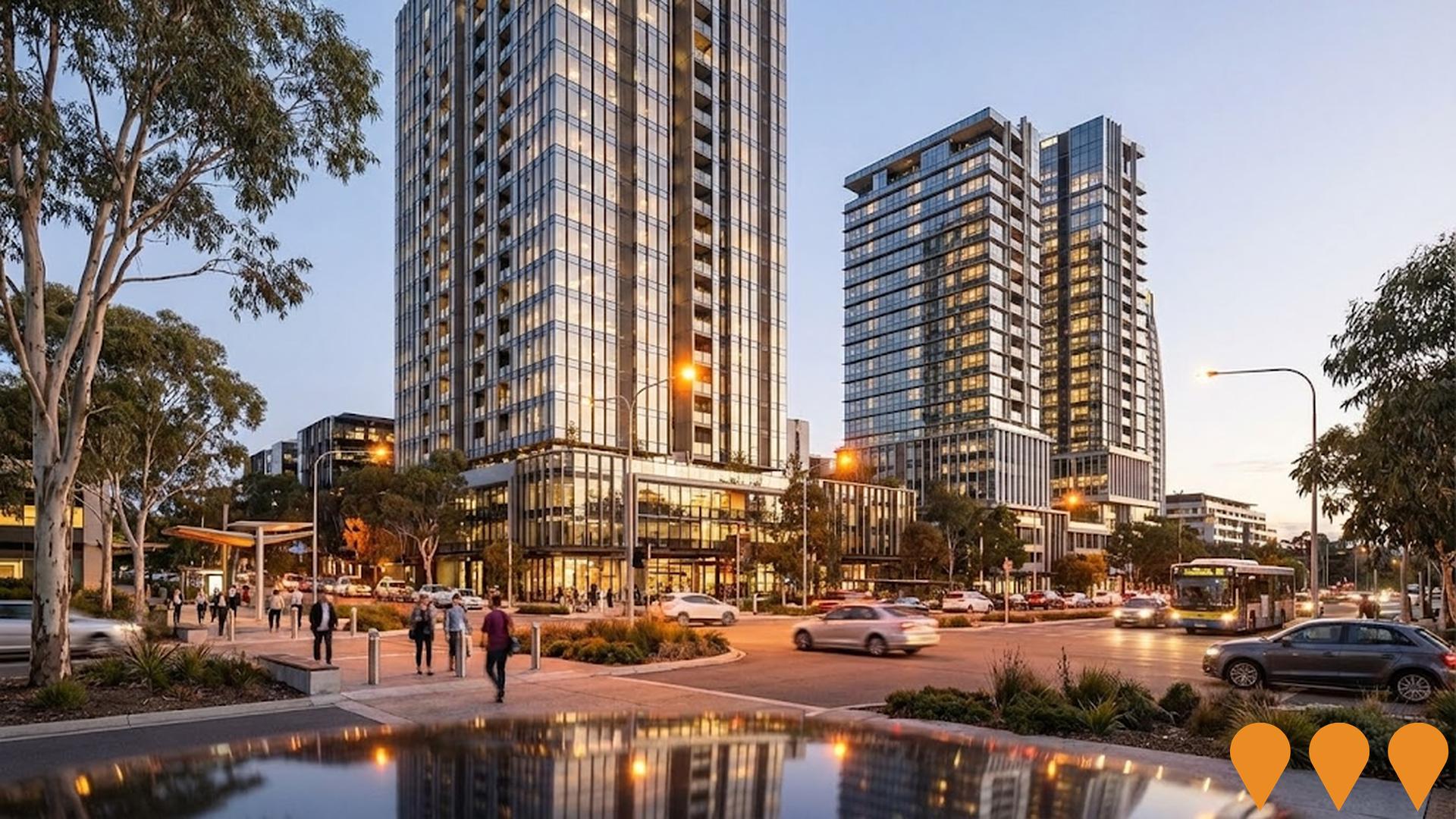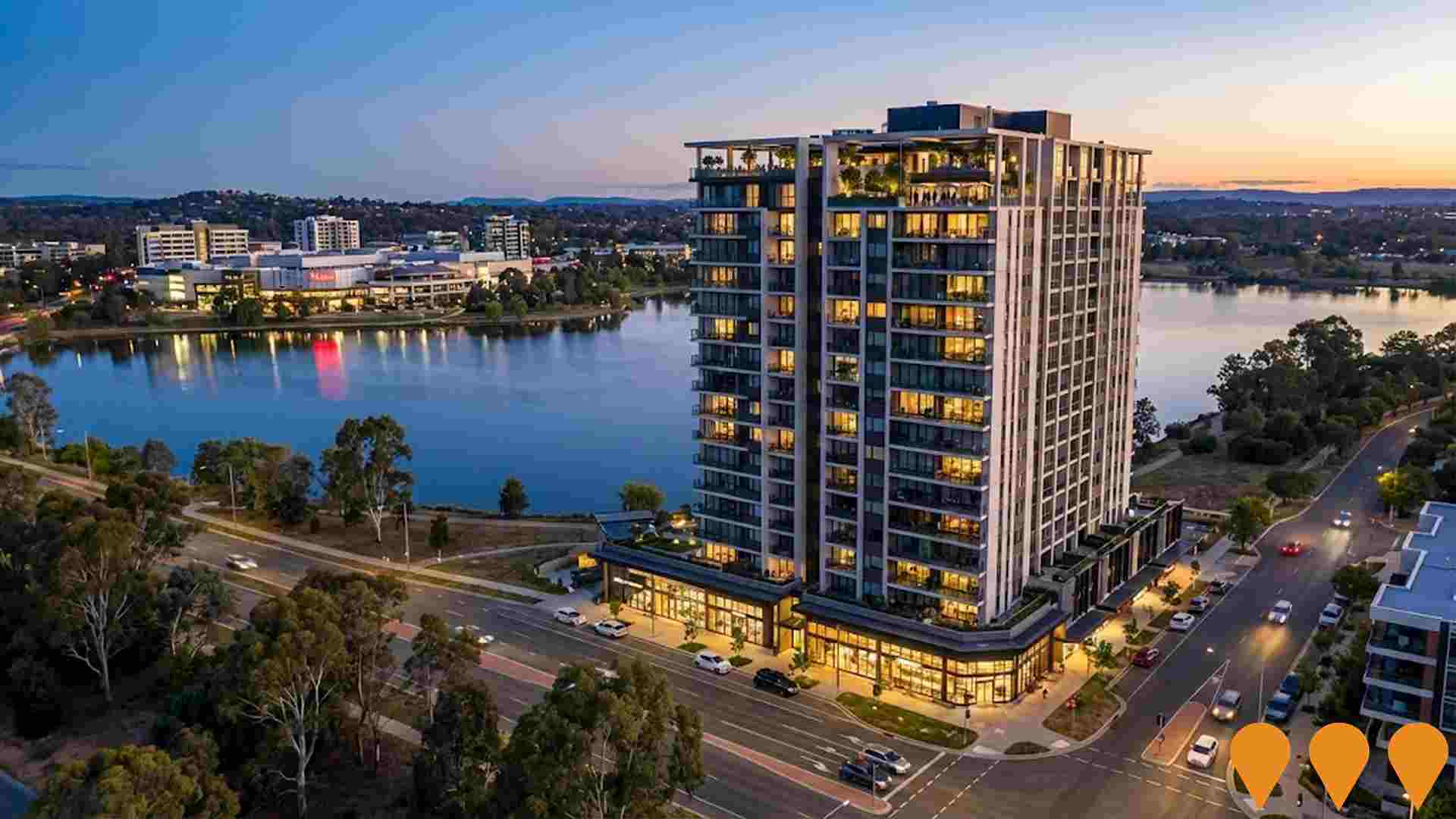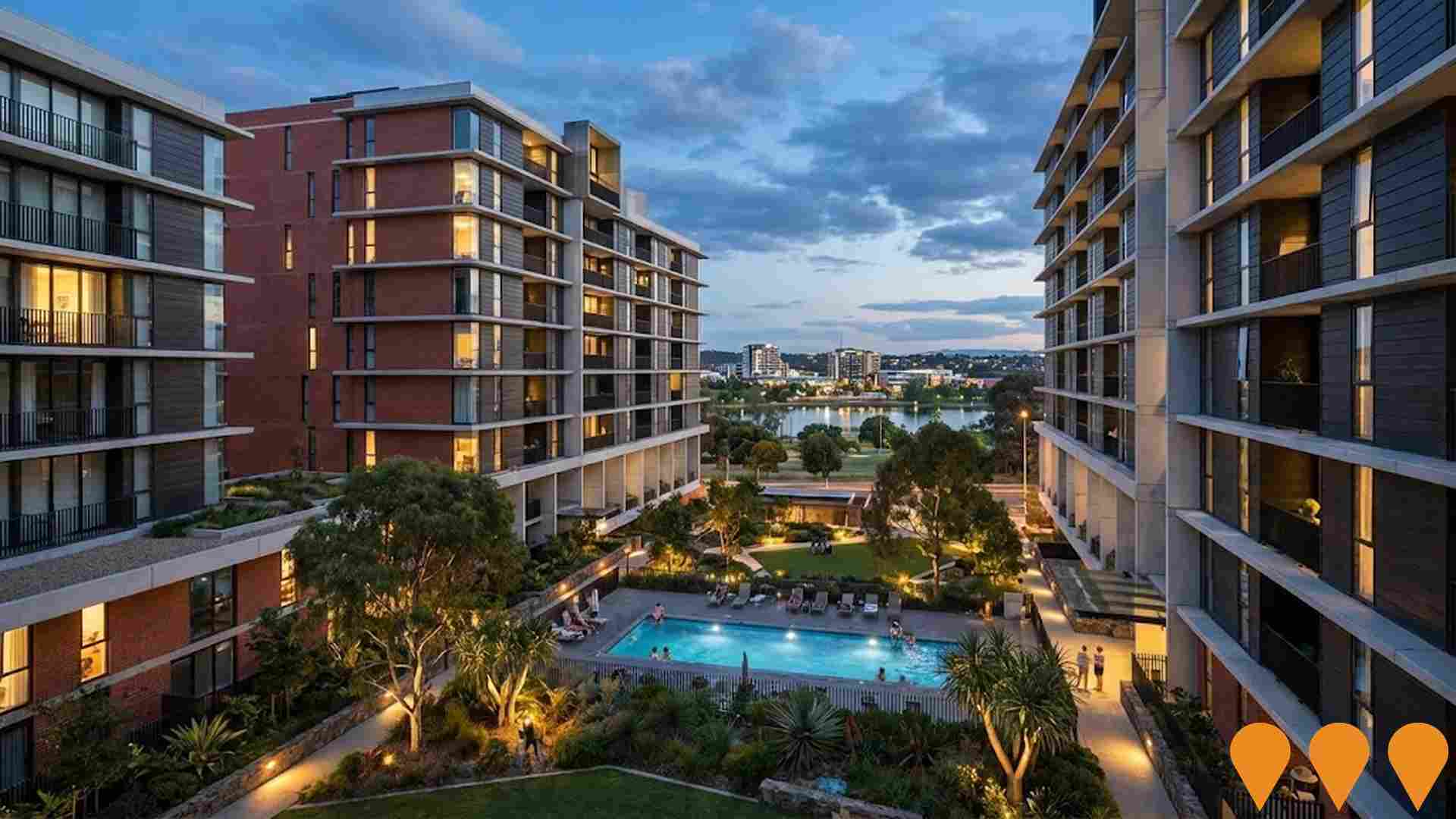Chart Color Schemes
est. as @ -- *
ABS ERP | -- people | --
2021 Census | -- people
Sales Activity
Curious about local property values? Filter the chart to assess the volume and appreciation (including resales) trends and regional comparisons, or scroll to the map below view this information at an individual property level.
Find a Recent Sale
Sales Detail
Population
Population growth drivers in Macquarie are strong compared to national averages based on AreaSearch's ranking of recent, and medium to long-term trends
Macquarie's population was 3,104 as of August 2021. By June 2024, it had increased to an estimated resident population of 3,154. This reflects a growth of 54 people (1.7%) since the census in 2021. The increase is attributed to 29 validated new addresses since the census date. As of August 2025, Macquarie's population is around 3,158, indicating a density ratio of 1,857 persons per square kilometer, which is higher than the average seen across national locations assessed by AreaSearch. Over the past decade, Macquarie has shown resilient growth patterns with a compound annual growth rate of 1.4%, outperforming its SA3 area.
Overseas migration contributed approximately 84.6% of overall population gains during recent periods. AreaSearch's projections for Macquarie are based on ABS/Geoscience Australia data released in 2024, using 2022 as the base year. For areas not covered by this data and years post-2032, age group growth rates from the ACT Government's SA2 area projections with a 2022 base are adopted. By 2041, Macquarie is projected to grow by 357 persons, representing an increase of 11.2% over the 17-year period.
Frequently Asked Questions - Population
Development
Residential development activity is lower than average in Macquarie according to AreaSearch's national comparison of local real estate markets
Macquarie has averaged approximately 12 new dwelling approvals annually over the past five financial years, totalling 64 homes. As of FY-26, 4 approvals have been recorded. Each year, an average of 3 new residents is gained per dwelling built, indicating strong demand that supports property values. The average expected construction cost for new dwellings is $478,000, suggesting developers focus on the premium market with high-end developments.
In FY-26, $443,000 in commercial approvals have been registered, indicating minimal commercial development activity. Compared to the Australian Capital Territory, Macquarie shows around 75% of construction activity per person but ranks among the 22nd percentile nationally, resulting in relatively constrained buyer choice and supporting interest in existing homes. New development consists of 80.0% detached dwellings and 20.0% attached dwellings, maintaining the area's traditional suburban character with a focus on family homes appealing to those seeking space.
This favours detached housing more than current patterns suggest (61.0% at Census), demonstrating ongoing robust demand for family homes despite increasing density pressures. Macquarie has around 708 people per approval, indicating a mature, established area. Looking ahead, Macquarie is expected to grow by 353 residents through to 2041. Current construction rates appear balanced with future demand, fostering steady market conditions without excessive price pressure.
Frequently Asked Questions - Development
Infrastructure
Macquarie has emerging levels of nearby infrastructure activity, ranking in the 27thth percentile nationally
Changes to local infrastructure significantly impact an area's performance. AreaSearch identified one major project likely affecting the region: Garden City Cycleway, Belconnen Town Centre Master Plan & District Strategy, Wayfarer Belconnen by Geocon (Stage 2), and Bruce Precinct (Section 15).
Professional plan users can use the search below to filter and access additional projects.
INFRASTRUCTURE SEARCH
 Denotes AI-based impression for illustrative purposes only, not to be taken as definitive under any circumstances. Please follow links and conduct other investigations from the project's source for actual imagery. Developers and project owners wishing us to use original imagery please Contact Us and we will do so.
Denotes AI-based impression for illustrative purposes only, not to be taken as definitive under any circumstances. Please follow links and conduct other investigations from the project's source for actual imagery. Developers and project owners wishing us to use original imagery please Contact Us and we will do so.
Frequently Asked Questions - Infrastructure
Canberra Light Rail Stage 3: Belconnen to City (Bruce Alignment)
Planning and feasibility analysis for the future Stage 3 of the Canberra Light Rail network, connecting Belconnen Town Centre to the City via Bruce. The proposed corridor serves major precincts including the University of Canberra, CIT Bruce, North Canberra Hospital, and GIO Stadium. The project follows the Belconnen Transitway alignment and aims to provide high-capacity public transport to the north-west.

Onderra
Onderra is a large-scale sustainable masterplanned community by Peet Limited on the University of Canberra campus in Bruce, ACT. The 15-hectare precinct will deliver approximately 1,600 high-quality terraces, townhouses and apartments with 7-8 star energy ratings, extensive tree retention, solar-passive design, rainwater harvesting, EV charging and direct access to Lake Ginninderra and 22 hectares of connected parks and open space.

Belconnen Town Centre Master Plan & District Strategy
Ongoing urban renewal of the Belconnen Town Centre guided by the 2023 District Strategy and 2016 Master Plan. Current works focus on the 'Blue-Green Network' with upgrades to Lake Ginninderra's foreshore, Emu Bank, and the implementation of the Southern Gateway Corridor. The project encompasses mixed-use high-density developments, improved pedestrian connectivity, and public transport integration.
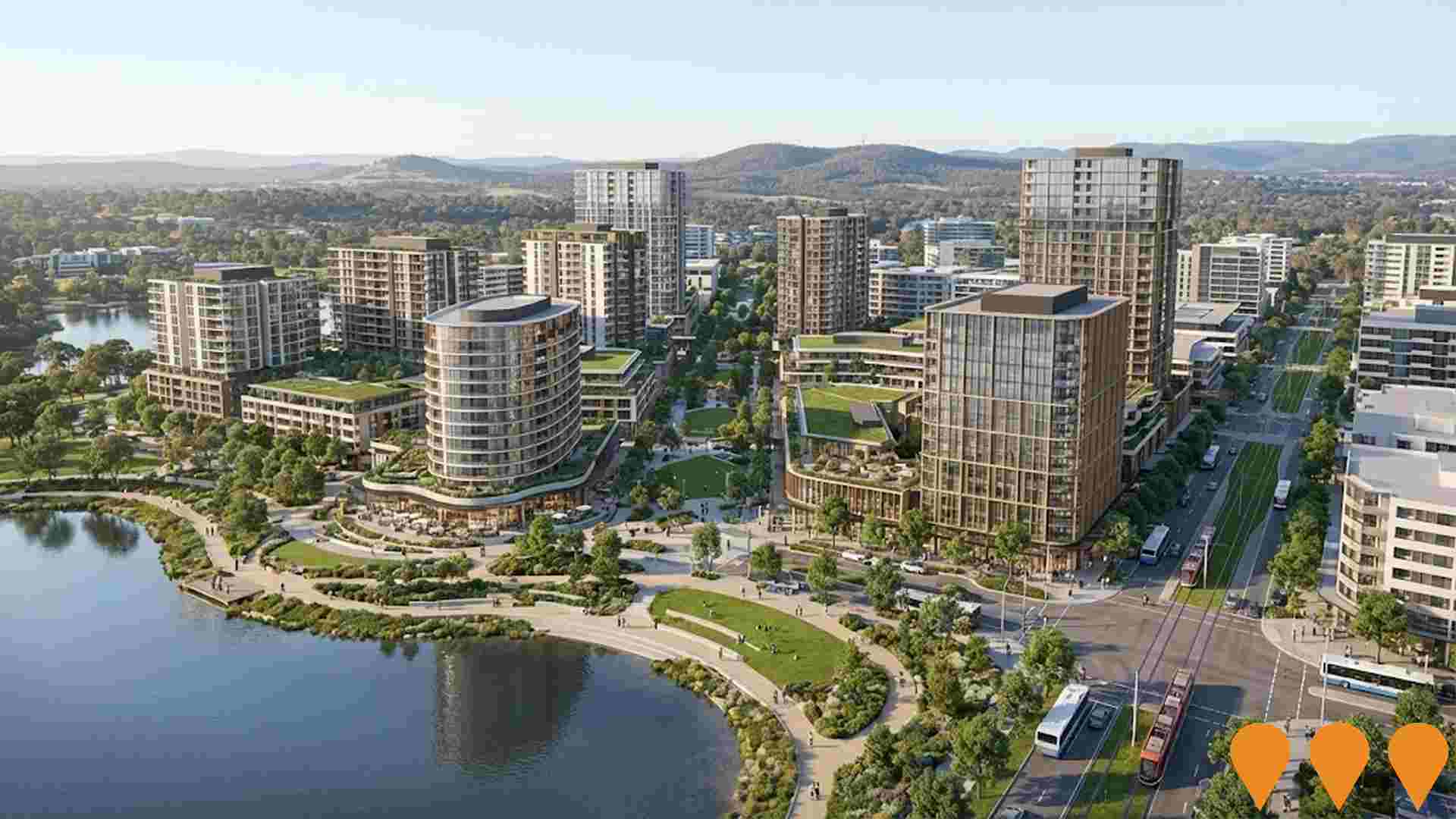
Belconnen Lakeshore - Connected Waterfront Precinct
Belconnen Lakeshore is an ACT Government land release and urban renewal project on the Lake Ginninderra foreshore at Emu Inlet. Guided by the Belconnen Town Centre Place Design Brief, the project will transform four waterfront sites including the Circus Sites Precinct and the former Water Police site into a mixed use precinct with new public waterfront promenades, upgraded open space and taller mixed use buildings stepping up from the lake edge. The Suburban Land Agency has run a two stage tender process for the land release and evaluated tenders, but as at mid 2025 the lakeshore blocks have not yet been sold, with final sale and detailed development design still to be confirmed.

Garden City Cycleway
Dedicated cycling infrastructure connecting Belconnen Town Centre to the City via separated bike lanes, shared paths, and cycling bridges. Part of ACT's active transport strategy to promote sustainable commuting and recreational cycling across Canberra.
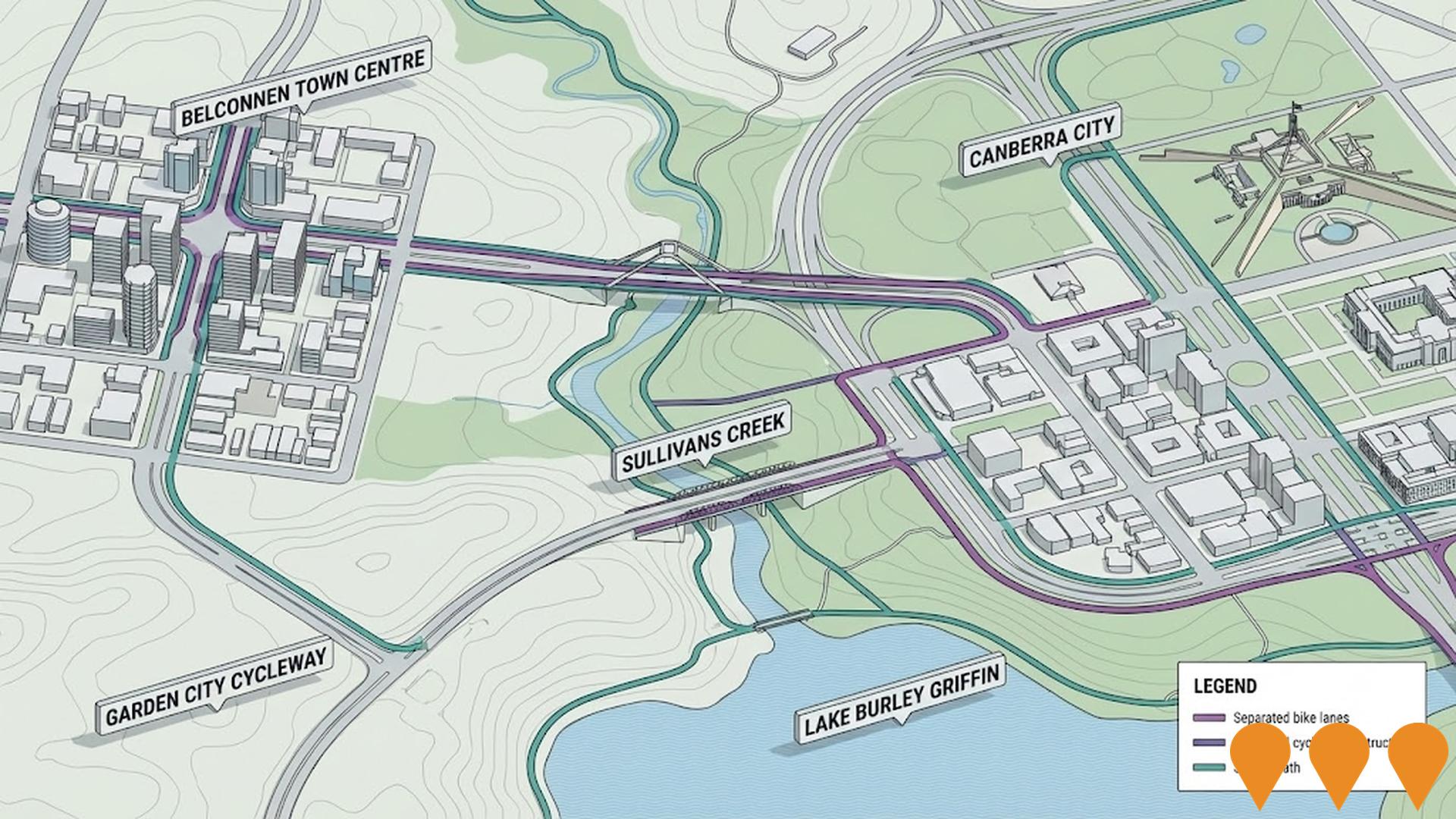
Bruce Precinct (Section 15)
A masterplanned mixed-use urban precinct and residential land release located centrally in Bruce, adjacent to the AIS and Bruce Ridge Nature Reserve. The project aligns with the Bruce Sports, Health and Education Precinct masterplan, delivering approximately 250-500 new dwellings, including affordable housing options, alongside commercial, hospitality, and retail opportunities.
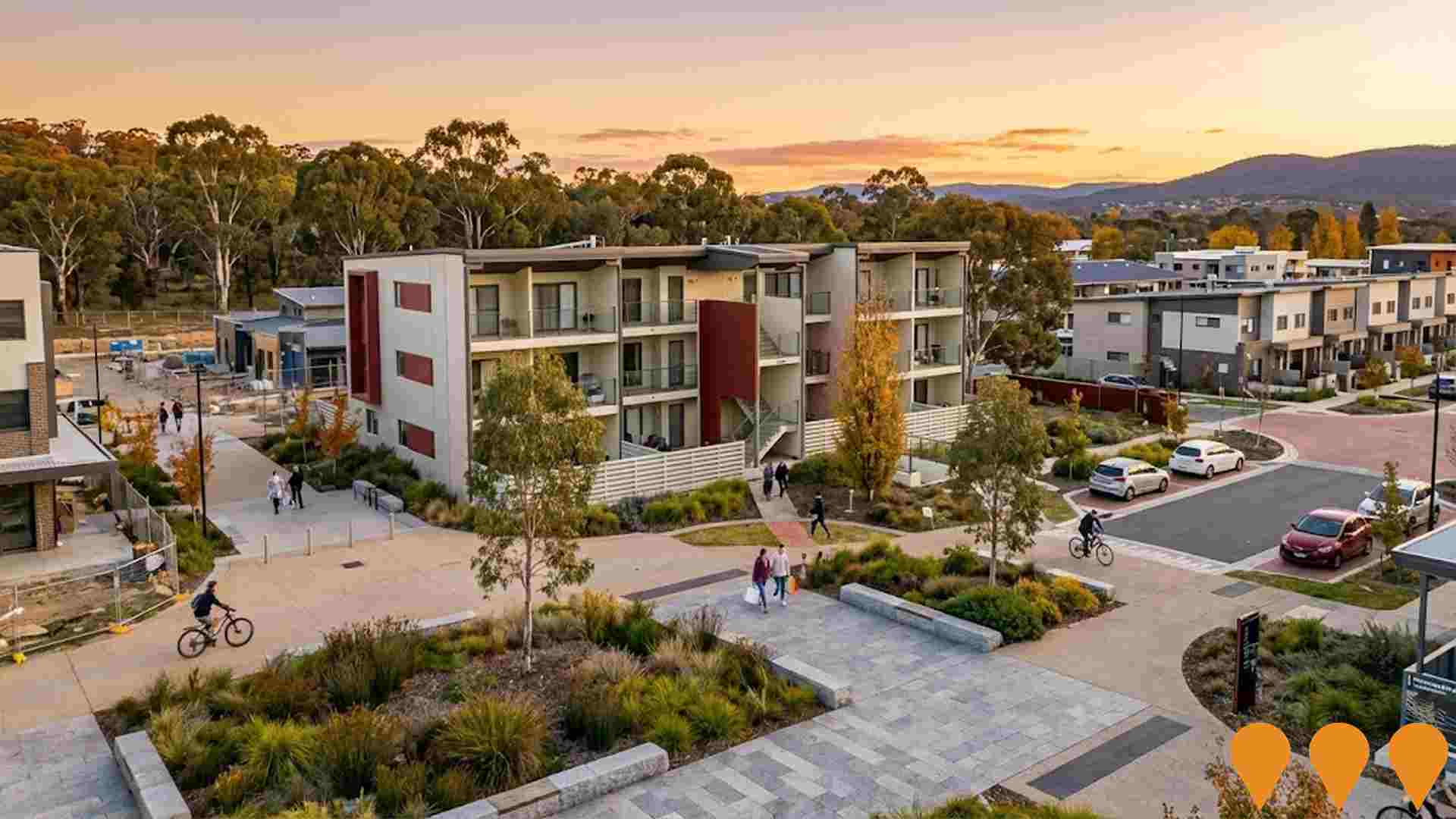
Belconnen Town Centre East Precinct (Republic Phase 2 & Future)
Major mixed-use redevelopment of the former Belconnen Bowling Club site and surrounding land in Belconnen Town Centre (approx. 5 km from Dunlop), delivering apartments, retail, and public spaces.
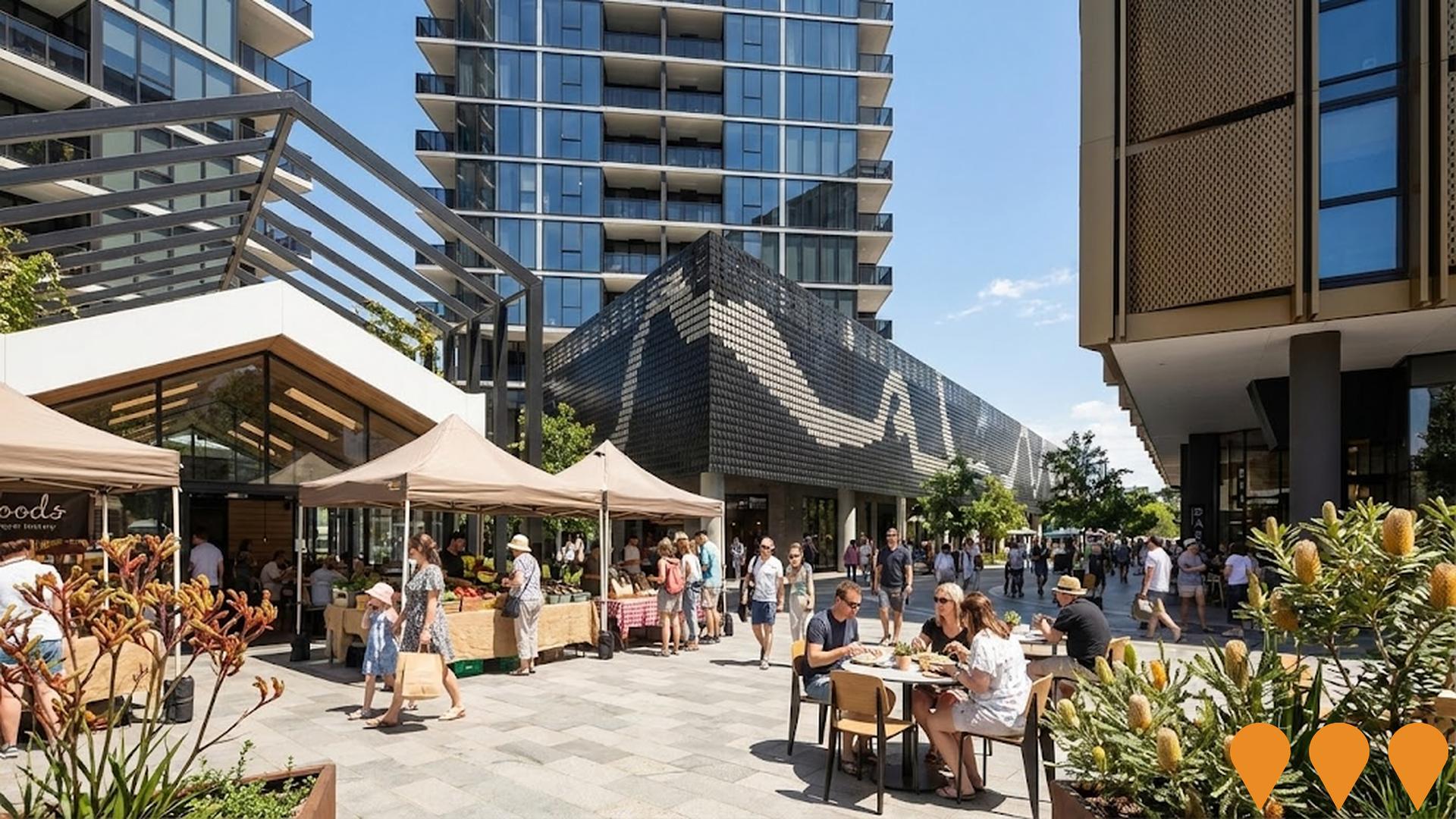
University of Canberra Campus Master Plan
20-year campus redevelopment strategy for UC's Bruce campus. Priority projects include a Sports Hub, Health Neighbourhood, Aged Care and Retirement Village, a renewed Library, University Park and a Catalyst Building, alongside new academic, research and student living precincts.
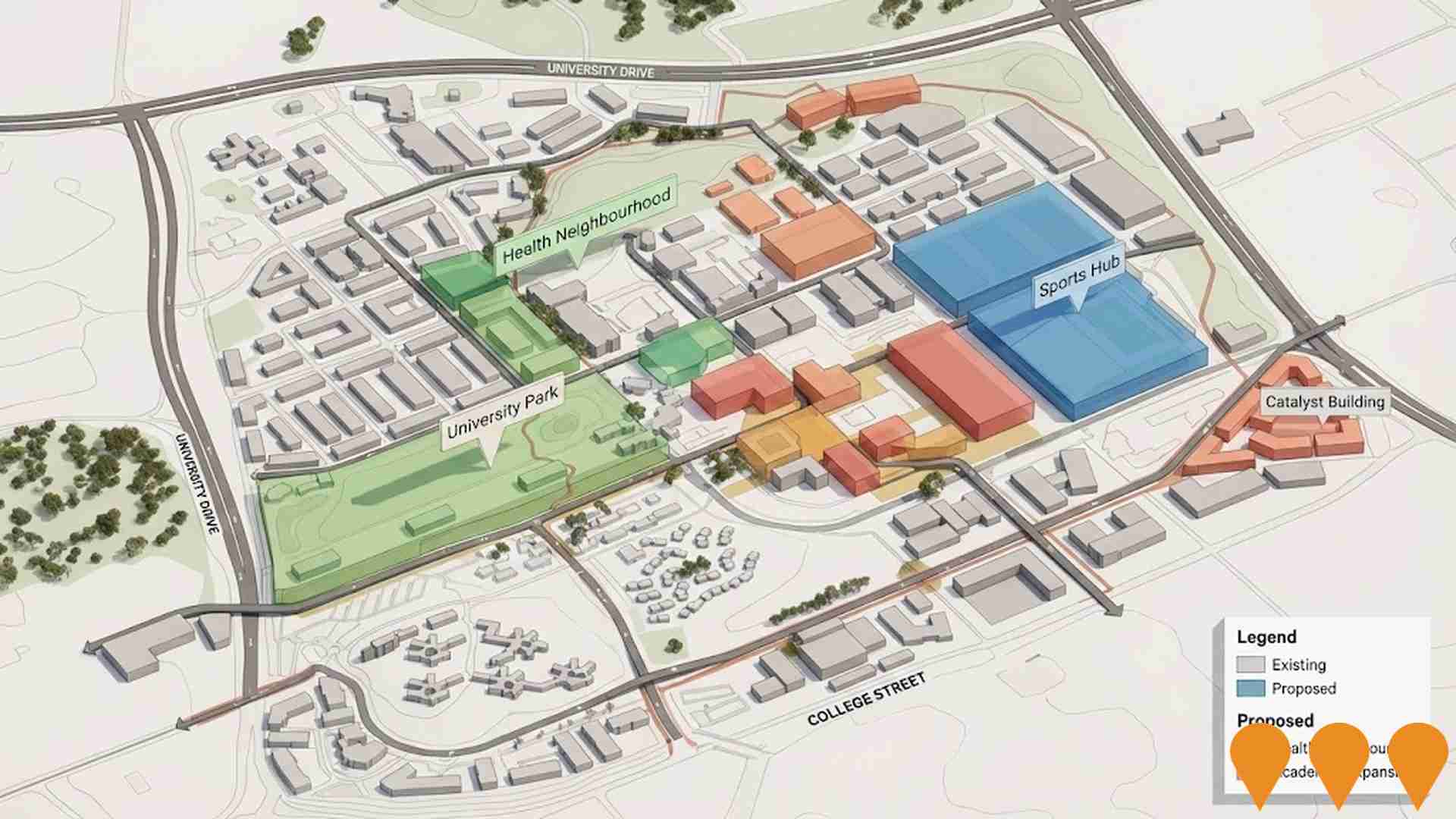
Employment
Employment performance in Macquarie has been below expectations when compared to most other areas nationally
Macquarie has an educated workforce with prominent essential services sectors. The unemployment rate was 4.7% in the past year, with estimated employment growth of 2.0%.
As of June 2025, there are 1,717 residents employed, with an unemployment rate of 5.1%, compared to the Australian Capital Territory's (ACT) rate of 3.4%. Workforce participation in Macquarie is 63.2%, lower than ACT's 69.6%. Key employment sectors among residents are public administration & safety, education & training, and professional & technical services. Education & training has a particularly high share at 1.5 times the regional level, while public administration & safety employs 28.4% of local workers, below ACT's 30.4%.
Employment opportunities locally appear limited, as indicated by Census data comparing working population to resident population. Between June 2024 and June 2025, employment levels increased by 2.0%, labour force grew by 1.6%, and unemployment fell by 0.4 percentage points. In contrast, ACT saw employment rise by 1.9%, labour force grow by 1.6%, and unemployment fall by 0.3 percentage points. Jobs and Skills Australia's national employment forecasts from May 2025 project overall growth of 6.6% over five years and 13.7% over ten years. Applying these projections to Macquarie's employment mix suggests local growth of approximately 6.5% over five years and 13.2% over ten years, though these are simple extrapolations for illustrative purposes only.
Frequently Asked Questions - Employment
Income
The area exhibits notably strong income performance, ranking higher than 70% of areas assessed nationally through AreaSearch analysis
According to AreaSearch's aggregation of latest postcode level ATO data released on June 30, 2022, Macquarie had a median income among taxpayers of $60,233 and an average level of $75,588. These figures are high nationally compared to the Australian Capital Territory's median income of $68,678 and average income of $83,634. Based on Wage Price Index growth of 13.6% since June 2022, estimated current incomes would be approximately $68,425 (median) and $85,868 (average) as of September 2025. Census data shows individual earnings at the 85th percentile nationally are $1,078 weekly. Distribution data indicates that 33.1% of locals in Macquarie fall into the $1,500 - $2,999 income category, similar to the broader area where this cohort represents 34.3%. After housing expenses, 85.3% of income remains for other expenses. The area's SEIFA income ranking places it in the 7th decile.
Frequently Asked Questions - Income
Housing
Macquarie displays a diverse mix of dwelling types, with above-average rates of outright home ownership
Macquarie's dwelling structure, as per the latest Census, consisted of 61.3% houses and 38.7% other dwellings (semi-detached, apartments, 'other' dwellings). In comparison, Australian Capital Territory had 69.4% houses and 30.5% other dwellings. Home ownership in Macquarie was at 32.9%, with mortgaged dwellings at 29.3% and rented ones at 37.8%. The median monthly mortgage repayment was $2,000, aligning with Australian Capital Territory's average, while the median weekly rent was $400 compared to Australian Capital Territory's $2,000 and $430 respectively. Nationally, Macquarie's mortgage repayments were higher than the Australian average of $1,863, and rents exceeded the national figure of $375.
Frequently Asked Questions - Housing
Household Composition
Macquarie features high concentrations of group households and lone person households, with a lower-than-average median household size
Family households constitute 61.3% of all households, including 23.9% couples with children, 25.7% couples without children, and 10.7% single parent families. Non-family households comprise the remaining 38.7%, with lone person households at 33.0% and group households making up 5.5%. The median household size is 2.3 people, which is smaller than the Australian Capital Territory average of 2.5.
Frequently Asked Questions - Households
Local Schools & Education
Macquarie shows strong educational performance, ranking in the upper quartile nationally when assessed across multiple qualification and achievement indicators
Educational attainment in Macquarie is notably high, with 51.7% of residents aged 15 years and over holding university qualifications. This compares to the national average of 30.4% and the SA3 area average of 43.8%. Bachelor degrees are the most common at 27.8%, followed by postgraduate qualifications at 18.0% and graduate diplomas at 5.9%. Vocational pathways account for 21.8% of qualifications, with advanced diplomas at 8.0% and certificates at 13.8%.
Educational participation is high, with 31.4% of residents currently enrolled in formal education. This includes 9.3% in tertiary education, 9.1% in primary education, and 6.2% pursuing secondary education. Macquarie Primary School and Canberra High School serve the area, collectively educating 1,148 students. The area has above-average socio-educational conditions (ICSEA: 1091). Educational provision follows conventional lines, with one primary and one secondary institution. Macquarie functions as an education hub, offering 36.4 school places per 100 residents, significantly higher than the regional average of 15.1. This attracts students from surrounding communities.
Frequently Asked Questions - Education
Schools Detail
Nearby Services & Amenities
Transport
Transport servicing is moderate compared to other areas nationally based on assessment of service frequency, route connectivity and accessibility
Transport analysis shows 22 active stops in Macquarie, served by a mix of buses. Six routes operate here, offering 528 weekly passenger trips. Residents enjoy excellent accessibility, with an average distance of 179 meters to the nearest stop.
Service frequency is 75 trips daily across all routes, equating to about 24 weekly trips per stop.
Frequently Asked Questions - Transport
Transport Stops Detail
Health
Health performance in Macquarie is lower than average with common health conditions somewhat prevalent across both younger and older age cohorts
Macquarie faces significant health challenges.
Common health conditions are somewhat prevalent across both younger and older age cohorts. The rate of private health cover is very high at approximately 57%, covering around 1,803 people. Mental health issues impact 10.1% of residents, while asthma affects 8.3%. A total of 66.5% report being completely clear of medical ailments, compared to 68.1% across the Australian Capital Territory. The area has 18.3% of residents aged 65 and over (576 people), higher than the 15.3% in the Australian Capital Territory. Health outcomes among seniors present some challenges, broadly in line with the general population's health profile.
Frequently Asked Questions - Health
Cultural Diversity
Macquarie was found to be more culturally diverse than the vast majority of local markets in Australia, upon assessment of a range of language and cultural background related metrics
Macquarie's cultural diversity was notable, with 31.9% of its population born overseas and 26.2% speaking a language other than English at home. Christianity was the predominant religion in Macquarie, comprising 36.9% of people. Buddhism showed an overrepresentation in Macquarie, making up 3.6% compared to 3.0% across Australian Capital Territory.
The top three ancestry groups were English (23.2%), Australian (23.1%), and Other (13.1%). Notably, Vietnamese (1.8% vs regional 1.2%), French (0.7% vs 0.4%), and Welsh (0.7% vs 0.6%) were overrepresented.
Frequently Asked Questions - Diversity
Age
Macquarie's population is slightly younger than the national pattern
Macquarie's median age is 37 years, slightly higher than the Australian Capital Territory's 35 but aligned with Australia's national average of 38 years. The 75-84 age group constitutes 7.4% of Macquarie's population, higher than in the Australian Capital Territory, while the 35-44 cohort makes up 13.6%, lower than the territory's percentage. Between 2021 and present, the 25 to 34 age group has grown from 17.3% to 19.4% of Macquarie's population, while the 35-44 cohort has decreased from 15.2% to 13.6%. By 2041, forecasts indicate significant demographic shifts in Macquarie. The 45-54 age group is projected to increase by 83 people (22%), rising from 383 to 467. Conversely, population declines are projected for the 5-14 and 25-34 age cohorts.
